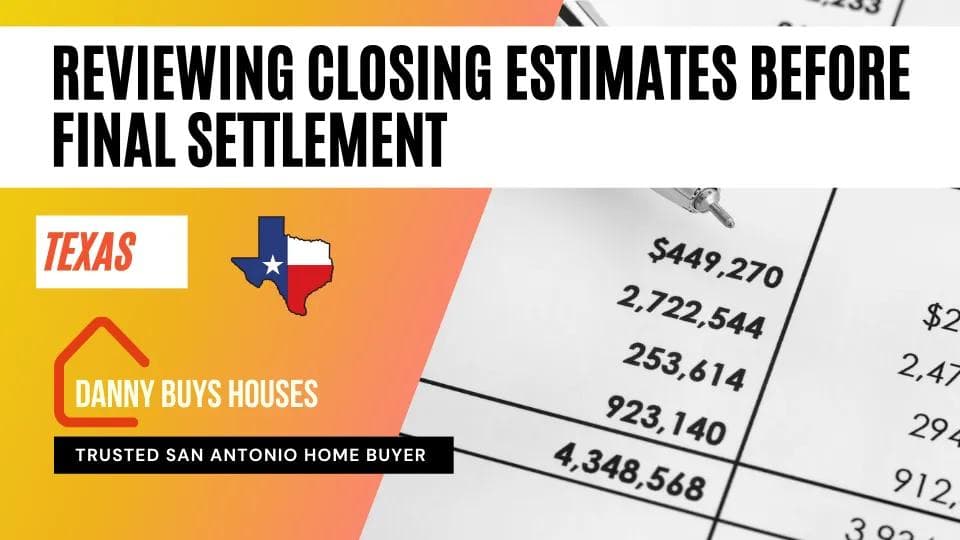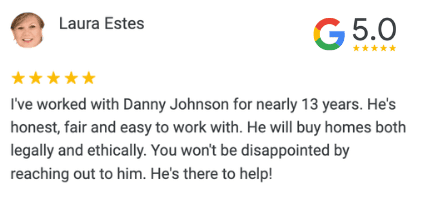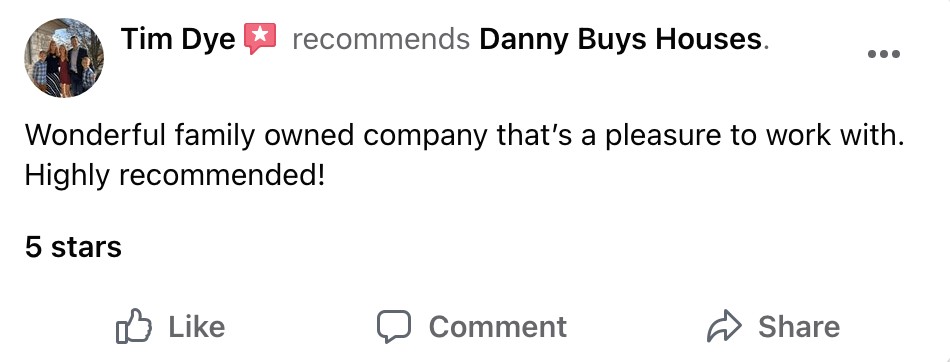
Reviewing Closing Estimates Before Final Settlement
By Danny Johnson | Updated 3/17/2025, 1:59:02 PM
Ensure a smooth real estate transaction by reviewing your closing disclosure and settlement statement. Understand closing costs.
- Key Takeaways
- Understanding Your Closing Disclosure Documents
- The Three-Day Review Period
- Key Components to Examine
- Comparing to Your Loan Estimate
- Reviewing Closing Estimates Before Final Settlement
- Understanding Fees and Charges
- Property Taxes and Insurance Escrow Review
- Settlement Statement Line Items
- Commission and Transfer Charges Assessment
- Conclusion
🗂 Table of Contents
Ever wonder why knowing your closing documents is like having a secret weapon in real estate? As a home seller, you're about to face a lot of paperwork. But don't worry, I've got your back! Let's explore the important step of reviewing your closing estimates before the final settlement.
When selling your home, the closing disclosure and settlement statement are your guides to financial clarity. They detail all costs of your real estate deal, from mortgage to closing costs. By law, you'll get your closing disclosure at least three business days before closing. This gives you time to review and understand every detail.
Think of these documents as the final chapter of your home-selling story. They show what you owe, what you'll get, and everything in between. Knowing them well is crucial to avoid surprises and ensure a smooth closing.

As your friendly real estate guide, I'm here to help you through this. We'll dive into closing estimates, clear up any confusing terms, and make sure you're ready for your closing day. Ready to become a pro at closing documents? Let's start!
Key Takeaways
- Closing disclosures must be provided three business days before closing
- The three-day review period is mandatory for comparing documents
- Closing disclosures show finalized charges, while loan estimates are approximations
- Some fees may change between the loan estimate and closing disclosure
- Understanding the closing disclosure helps avoid last-minute surprises
Understanding Your Closing Disclosure Documents
Looking over your Closing Disclosure is key in buying a home. This five-page document shows your loan details, monthly payments, and more. Let's explore what you need to know about this important paper.
The Three-Day Review Period
You'll get your Closing Disclosure three business days before closing. This time lets you check the document and ask questions. Make the most of it to ensure everything is right.

Key Components to Examine
Your Closing Disclosure has crucial mortgage info:
- Loan terms (15-30 years typically)
- Monthly payments
- Annual percentage rate (APR)
- Escrow account details
- Property taxes and homeowner's insurance estimates
Focus on these points. Small mistakes can lead to big issues. For instance, property taxes and insurance might change, affecting your payments.
Comparing to Your Loan Estimate
It's important to compare your Closing Disclosure with your initial loan estimate. You can see what your lender fees are going to be. Some costs might change, but others are fixed. If you notice big differences, ask your lender for help.
Remember, closing costs are usually 2% to 5% of your loan. If these costs are added to your loan, the total amount might be higher. Take time to understand each item to avoid surprises at closing.
Reviewing Closing Estimates Before Final Settlement
Let's explore closing estimates! These documents are key to a smooth home buying journey. The settlement statement and closing disclosure (CD) are essential.
Understanding Fees and Charges
Closing costs can quickly add up. You might see title insurance, appraisal fees, and recording fees. It's vital to check each one. Settlement statements detail all financial transactions, helping you understand what you're paying for.
Property Taxes and Insurance Escrow Review
The closing disclosure will show property taxes and insurance. These are often paid into an escrow account. Ensure these amounts align with your expectations. If not, it's time to ask questions!

Settlement Statement Line Items
The settlement statement is full of details. You'll find the purchase price, real estate agent commission, and transfer charges. If anything is unclear, don't hesitate to ask.
Commission and Transfer Charges Assessment
Real estate agent commissions are a significant part of closing costs. They usually range from 5% to 6% of the home's sale price. Transfer charges vary by location. Review these to avoid surprises at closing.
Remember, the CD must be given three days before closing. This allows you to compare it with your loan estimate. By grasping these documents, you'll be ready for your closing day!
Conclusion
Understanding your closing statement is key for any homeowner. This document, given at least three business days before the final settlement, lists all costs of your real estate deal. It guides you to your home sale profit.
Closing costs usually fall between 2% to 5% of the home's price. These costs include fees for loans, appraisals, and real estate agents. It's important to check each item carefully. The closing process takes about 30 to 45 days, with the signing lasting one to two hours. You'll get to ask questions and make sure everything is right.
Your closing statement is not just numbers; it's a legal record of your home sale. Make sure to compare it with your initial loan estimate. While some changes are okay, big differences need to be looked into. By being informed and careful, you'll have a smooth final settlement and a successful home sale.
Frequently Asked Questions
In this section we will answer the most common questions to how to review an estimated closing statement
What is an estimated closing statement, and why is it important?
An estimated closing statement, also known as a settlement statement or HUD-1 form, itemizes all the financial details of a real estate transaction. It provides a breakdown of costs for both buyers and sellers, including taxes, fees, loan payoffs, and credits. Its important because it ensures transparency and helps parties understand their financial responsibilities before finalizing the deal.
How can I verify that all charges on the closing statement are accurate?
Review each line item against your initial purchase agreement and loan estimate. Cross-check figures such as property taxes, homeowner’s insurance, lender fees, and title charges. Contact your lender or attorney to clarify any discrepancies or unfamiliar charges.
What should I focus on when checking the buyer’s side of the closing statement?
Focus on items like the down payment amount, loan origination fees, appraisal fees, inspection costs, prepaid interest charges, escrow account setup (if applicable), and any seller concessions agreed upon in the contract.
Are there common errors to watch for in an estimated closing statement?
Yes. Common errors include incorrect prorations of taxes or HOA dues, miscalculated interest rates or loan amounts due to last-minute changes in terms or conditions not being updated properly. Always double-check these sections for accuracy.
What key components should I verify on the estimated closing statement?
Verify the purchase price, loan amount, interest rate, property taxes, homeowner’s insurance, title insurance fees, recording fees, and any other charges or credits like seller concessions or earnest money deposits.

AUTHOR
Danny Johnson
Owner and Founder at Danny Buys Houses
Danny Johnson is an experienced real estate investor who has been buying houses for cash since 2003. As owner of Danny Buys Houses, Danny's goal is to help homeowners sell their house fast, regardless of the situation, so they can move on with their life.
Danny has been featured in publications such as Forbes, Realtor.com, BiggerPockets, Yahoo Finance, US News, and more. He is also the author of the book 'Flipping Houses Exposed'.




